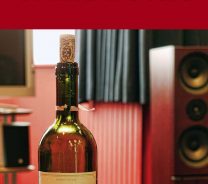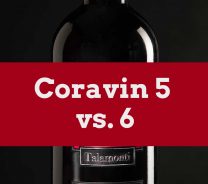Is Letting Wine Breathe a Myth?
Last Updated on August 1st, 2023
Reader Disclosure Disclosure: We may earn commissions for purchases made through links on our site. Learn more on our about us page.No, letting wine breathe is not a myth. The process of ‘letting wine breathe’ is called aerating. To let your wine aerate results in benefits involving taste and aroma by exposing the wine to oxygen. Oxidation will diminish tannins, which help smooth out your wine’s taste.
There are a variety of ways to do this process. One of the most popular methods is decanting. Your wine will oxidize during a simple decanting process. Of course, this depends on how long you decant your wine. The only ‘myth’ involving the aeration process is that it will not reduce a hangover (but hydration will!).

Do you really need to let wine breathe?
You know it contains a tannin taste if you are familiar with wine. Initially, tannins descend from different parts of the grape, such as stems, seeds, and outer skins. Unfortunately, tannins tend to leave a rather unpleasant taste that is seemingly intolerable after a few drinks. Allowing the wine to breathe before serving can soften tannin flavors in the wine to create a better experience when consuming your wine.
That’s not the only benefit. The process will also help soften other notes, such as aroma. Sulfites will also disband from the wine, which helps those who are sensitive to the sulfite aftertaste. Yes, given all the factors and benefits of simply letting your wine breathe before consuming. Letting your wine breathe does indeed make a difference in the overall experience of your bottle of choice.
Does letting red wine breathe make a difference?
Older red wines are the wines that will be most beneficial to the aeration process. This is due to the fact that older red wines, in general, tend to be denser than white wines. Therefore, red wines will actually benefit more from the aeration process and decanting. Allowing a red wine to breathe will result in all the great benefits of aerating a wine.
Without aerating too much, tasting the wine every few hours after you’ve opened, it will prove this. Each taste will improve over time. This is because the wine will be exposed to air throughout the evening. Some will even set up a blind taste test to identify if the wine indeed improves in taste when aerated.
Should you aerate cheap wine?
Cheap wine typically lacks everything you’d want to change by aerating a wine. In addition, they do not benefit from the aeration process because they are created so ‘light bodied’ simply for quick, easy consumption. You could indeed aerate your cheap wine. But generally, it will not provide a difference in the experience of consuming your cheap wine of choice.
Wines that benefit from aerating would be thick and concentrated wines, which happen to be older wines. With age comes a price. With that being said, the older the wine, the more expensive it is and the more likely it will benefit from decanting and aerating.
Does opening a bottle of wine let it breathe?
The breathing process begins when you open the bottle. You can open a bottle and let it breathe in the bottle before consuming it. This will take longer to aerate because the oxygen exposure is low from inside the bottle. This could take roughly 2+ hours for the process to complete from within the wine bottle itself. However, pouring your wine into a decanter will expose the wine to more air and surface. This will overall make the entire process slightly quicker. It’s always recommended to complete this process before serving the wine that way. It’s less waiting and more enjoyable.
If you’re looking into products that help with the aeration process, plenty are on the market. Some of which are very affordable. Sets are often sold, including a wine aerator, a simple decanter, and other products to make the process feel simpler and less stressful. These can be found at any basic home and wine goods shopping outlet for purchase or even just online.
Summary
Letting wine breathe is not a myth. It’s called aerating – and it actually can benefit the overall experience of your wine. Letting wine breathe is not required. However, it’s a process that will transform your favorite wine into something unrecognizable. Older red wines will benefit most from this process. On the other hand, cheap wines will have no benefit to aerating, for they are created for easy, quick consumption. The treating process begins when you open the wine and ends at the last glass of the evening.


















